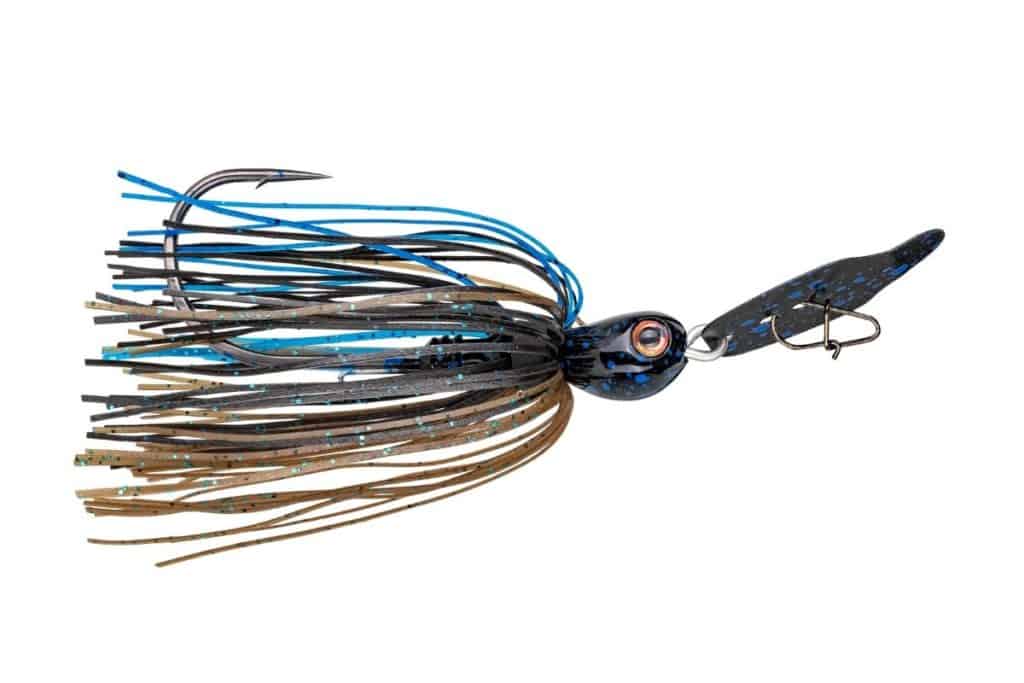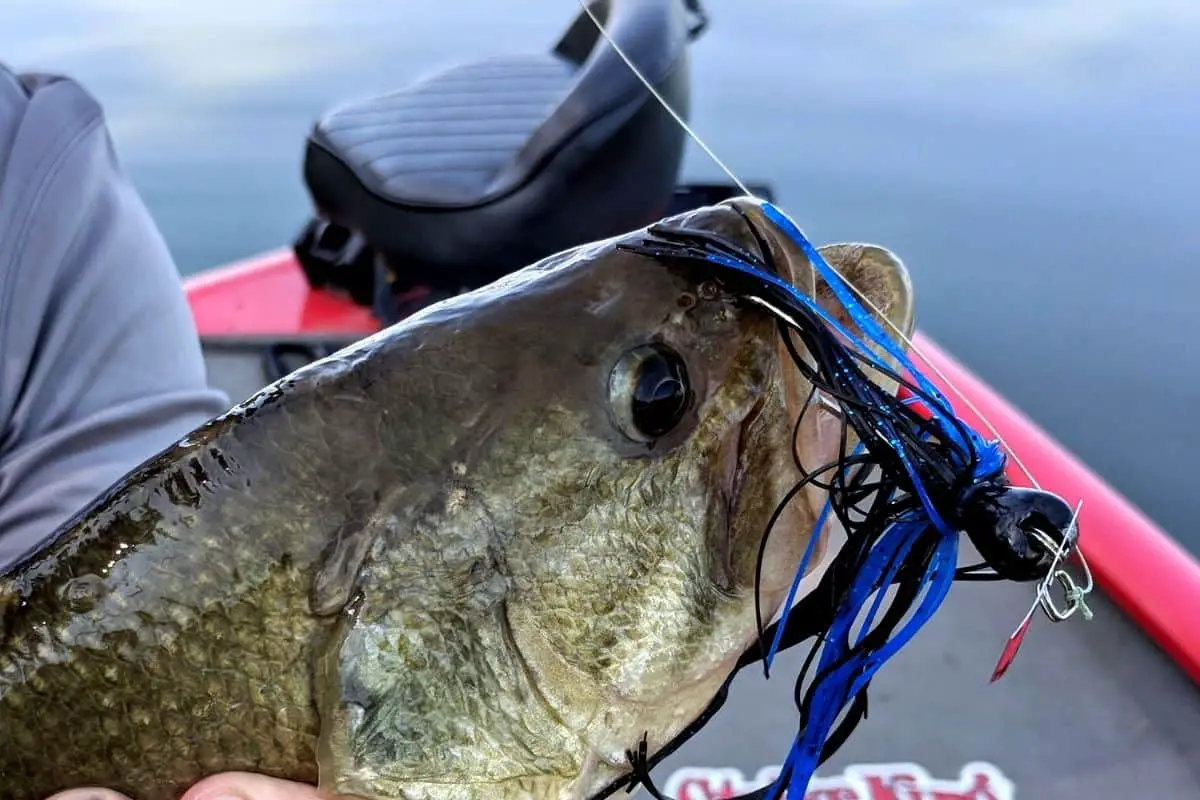Chatterbaits, or bladed jigs, took over the bass fishing world in 2006 when Bryan Thrift won a FLW Toyota Series event on Lake Okeechobee with the lure. He had promised the creator, Ron Davis, that he would mention the lure to help market it.
It worked.
Almost every major lure manufacturer has some sort of bladed jig in their respective lineups. Why? It catches fish, especially when paired with the right reel for the presentation.
The best gear ratio reel for the most traditional bladed jig presentation is a 8.2:1. Other gear ratios can be used depending on the presentation and retrieve.
Bladed jigs are versatile lures that anglers have learned to fish in many situations. The presentation and retrieve style can vary depending on depth, cover and structure.
These gear ratios are well-paired with the following types of retrieves.
(Here is an article about catching bass in murky water.)
Standard Bladed Jig Presentation with an 8.2:1 Gear Ratio
Fishing the bladed jig like a traditional jig is a dynamite presentation. Let me explain.
Toss the bladed jig, let it sink and settle on the bottom. Then impart the action to the lure with the rod – not the reel.
Lift the rod tip to hop the lure. When the lure pops off the bottom you should clearly feel the blade start to vibrate immediately. Pull the bladed jig forward a foot or two and then let it settle back down to the bottom. Repeat.
The reel is not imparting the action to the lure in this type of a presentation – the rod is.
An 8.2:1 gear ratio is perfect for this style of retrieve because once a fish bites, you can winch down on it very fast and get the head of the bass turned and coming back to you before it can bury up in the cover again.
This faster gear ratio is ideal for pulling the lure and bass out of heavy grass, thick brush, and deep water.

When to Use a 6.3:1 Gear Ratio for a Bladed Jig
If the conditions and situation calls for it, there are times when I will use a more traditional swimming retrieve with a bladed jig.
I like to think of it similar to how a would retrieve a spinnerbait.
Banging it into hard cover, ripping it through sparse vegetation, or popping it over timber are all situations where I will swim the bladed jig.
To keep my retrieve speed slow and not overwork the lure I will use a reel that has a 6.3:1 gear ratio or slower.
I still want the bait to behave erratically and will twitch and pop the lure in open water when it is not banging into anything. The 6.3:1 is perfect for this since I tend to get really excited fishing and will soon be retrieving the lure much too quickly if I didn’t have the slower gear ratio keeping me in check.
Another Way to Think About Bladed Jigs and Gear Ratio
To simplify the situation even more, I like to think about my gear ratio choice in the following manner:
If the presentation I am going to use is more vertical, or bottom-bouncing, I stick with the higher gear ratio.
If the presentation is more horizontal, or swimming, I will choose a slower gear ratio.
When the bladed jig bite is on I prefer to keep two rods with two different gear ratio reels at the ready. I can then switch based on the situation I am faced with – cover and depth.
Final Thoughts
Bladed jigs, or Chatterbait style lures, are here to stay. Pairing your preferred presentation with the correct gear ratio will allow you to fish this lure efficiently resulting in more bass being caught.
Tight lines. Be safe and make sure to encourage someone today. You never know how you may change their life forever.
Isaiah 6:8

